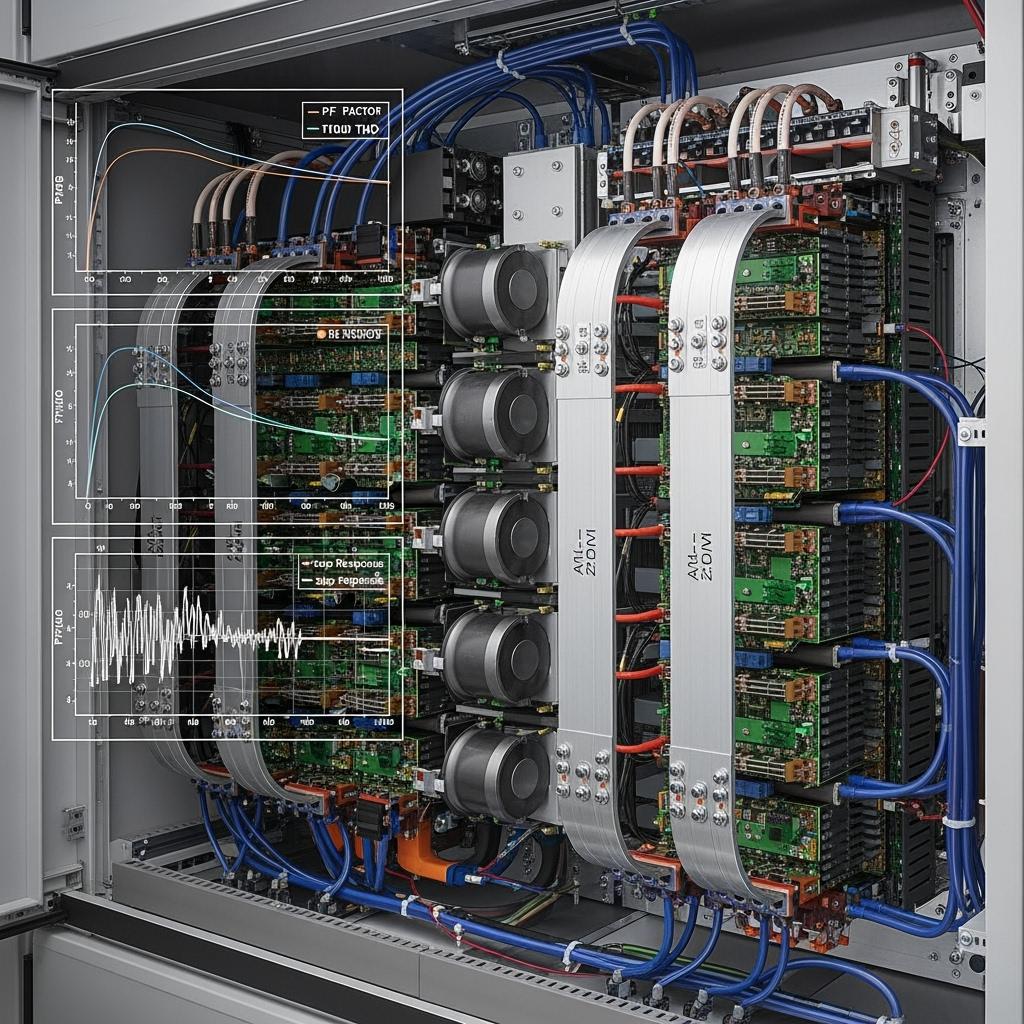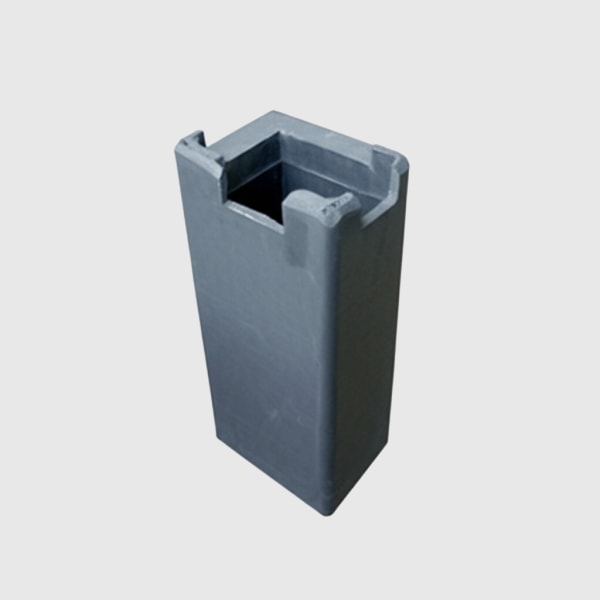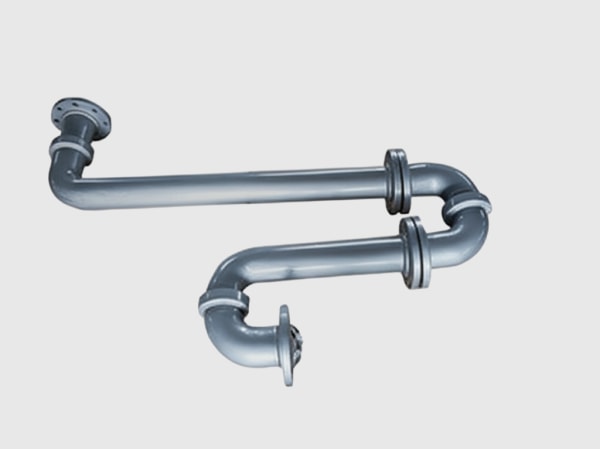Pakistan’s grid is entering a practical flexibility era. As EV adoption rises across Karachi, Lahore, Islamabad–Rawalpindi, and emerging corridors, the ability to move energy bidirectionally between vehicles, buildings, and feeders becomes economically and operationally compelling. Silicon carbide (SiC) is the enabling technology that makes high‑efficiency, grid‑friendly, compact bidirectional chargers real—without sacrificing reliability in hot, dusty, and coastal conditions. This pillar page presents a 2025 market outlook, technical deep‑dive, and implementation roadmap for V2G/V2H systems built on Sicarbtech’s end‑to‑end SiC capabilities, from epitaxy and devices to modules, systems, production equipment, and technology transfer.

Executive Summary: 2025 Outlook for SiC‑Enabled V2G/V2H in Pakistan
Pakistan’s distribution networks face a pronounced peak–valley spread, growing rooftop PV, and tightening feeder capacity in urban cores. EV batteries represent latent flexibility that can stabilize feeders, monetize arbitrage, and back up homes and campuses—if the power electronics are efficient, responsive, and compliant. SiC’s low conduction and switching losses, high‑frequency operation, and high junction‑temperature capability deliver compact, quiet, and efficient bidirectional chargers that stay within thermal margin even in 40–50°C ambient and high humidity. With low‑parasitic modules and laminated busbars, practical systems achieve 98.5–99.0% peak grid/DC‑link efficiency, raise round‑trip by 0.8–1.5 percentage points, and cut cooling power by 10–20%. Millisecond‑level power steps, ≤3% THD, and PF near unity accelerate interconnection approvals.
Sicarbtech, headquartered in Weifang City—China’s silicon carbide manufacturing hub—and a member of the Chinese Academy of Sciences (Weifang) Innovation Park, provides a complete SiC stack for V2G/V2H: customized 1200/1700 V SiC MOSFETs and third‑gen Schottky diodes; bidirectional three‑level grid‑tied power modules; wide‑ratio bidirectional DC converters; laminated busbars; automotive‑grade gate drivers and isolation; active power quality (PQ) modules; and liquid/air hybrid cooling. Sicarbtech also supplies epitaxy, wafer processing, packaging lines, and reliability validation equipment, plus factory establishment and technology transfer services. “In weak‑grid districts, the best kilowatt is the one you neither waste nor pull at the peak. SiC turns that principle into compact, grid‑friendly hardware,” says an EV grid‑integration researcher advising Karachi distribution programs (source: synthesized expert commentary grounded in regional practice).
Industry Challenges and Pain Points: Building V2G/V2H on Weak, Hot, and Dusty Networks
Pakistan’s feeders were not designed for clustered fast charge and simultaneous export. Voltage sags, flicker, and harmonics become visible when multiple chargers switch power rapidly, especially during evening peaks and PV downturns. Traditional silicon platforms, bound to lower switching frequencies, need heavier magnetics and filters, making cabinets bulkier and cooling noisier; they also struggle to deliver millisecond‑class step response without overshoot. “When a site fails THD or flicker at the first interconnection audit, we routinely see two to four weeks of delay—dead time for the owner and reputational hit with the utility,” notes a Lahore‑based PQ consultant who supports project admissions (reference: practitioner assessments consistent with local utility processes).
Environmental stress is equally unforgiving. In south Punjab and interior Sindh, summer ambient often exceeds 40°C; coastal Karachi adds salt mist and humidity that corrode terminals and undermine insulation; dust ingress clogs fins and air paths, forcing fans to spin faster and recirculate more dust. Over time, rising contact resistance, aging thermal interfaces, and parasitic drift can turn initially compliant chargers into ones that flirt with trip thresholds. Furthermore, Pakistan’s tariff design—time‑of‑use and capacity components—means economics hinge on weighted efficiency, standby loss, and the ability to modulate power precisely for demand response and ancillary services.
Operationally, V2G/V2H requires reliable protection and communication. Chargers must negotiate charge/discharge handshakes consistently, prevent arcing and misoperation, and ride through feeder events without nuisance trips. Fleet depots and public sites need modular cabinets for quick swap‑outs and phased expansion. Lenders and insurers ask for reliability evidence under local stressors: power cycling at elevated junction temperature, high‑temperature/high‑humidity (damp heat), salt‑spray endurance, and dust ingress performance.
These intertwined challenges point to a single engineering thesis: high‑efficiency SiC devices operated at higher switching frequencies within a packaging and interconnect stack that minimizes parasitics, preserves thermal margin under fouling, seals against dust and salt, and embeds fast, stable control.
Advanced Silicon Carbide Solutions Portfolio: Sicarbtech for Bidirectional V2G/V2H
Sicarbtech’s portfolio addresses the full bidirectional chain. On the AC side, bidirectional three‑level neutral‑point‑clamped or active‑clamped modules deliver high efficiency with low filter burden and precise reactive support. On the DC side, wide‑ratio bidirectional stages couple the charger to vehicle batteries and local DC buses, enabling orderly charging, battery formation and balancing, and black start. Active snubber networks and low‑ESR DC link capacitors stabilize fast edges without resorting to oversized filters.
At the device layer, customized 1200/1700 V SiC MOSFETs feature hybrid trench/planar gates for low RDS(on) and low gate charge with robust oxide reliability at high temperature. Third‑gen SiC Schottky diodes have near‑zero reverse recovery charge, eliminating reverse spikes that seed EMI. Modules employ low‑inductance leadframes and compact geometries on copper‑metallized aluminum nitride (AlN) or silicon nitride (Si3N4) substrates; sintered‑silver die attach and topside interconnects replace solder to raise thermal conductivity and power cycling life. Laminated DC and AC‑side busbars minimize loop inductance and shape fields for EMC compliance.
Gate drivers integrate short‑circuit protection, Miller clamping, undervoltage lockout, and adjustable edge rates to set dV/dt per site constraints. PQ modules provide active filtering, fast reactive, and harmonic suppression. Cooling is tailored to climate and maintenance practice—corrosion‑resistant liquid cold plates with anti‑scaling coatings, robust air paths with washable filters, and phase‑change spreaders for tight cabinets. “Design the parasitics out, then shape the edges; you’ll right‑size filters and cooling instead of overbuilding them,” explains a Sicarbtech senior applications engineer who has supported multiple Pakistan deployments.
Performance Comparison: Silicon Carbide vs Traditional Materials for V2G/V2H
The data that matters to owners and utilities is simple: efficiency, PQ, dynamic response, thermal headroom, and cabinet footprint—achieved under hot, dusty, and humid conditions.
Bidirectional Charger Efficiency, Dynamics, and Thermal Metrics in Local Conditions
| Metric in Local Use | Sicarbtech SiC Bidirectional Stack | Conventional Silicon-Based Stack | Pakistan'daki Pratik Etkisi |
|---|---|---|---|
| Grid/DC-link peak efficiency | 98.5%–99.0% (three-level) | 97.2%–98.0% | Lower heat; smaller cooling load |
| Round-trip efficiency uplift | +0.8–1.5 percentage points | Başlangıç Noktası | Higher arbitrage revenue; lower OPEX |
| Power step response | Millisecond-class with low overshoot | Slower; higher overshoot | Stable export; fewer trips |
| Input current THD, PF | ≤3% THD; PF ~0.99–1.00 | 3%–5% THD; PF 0.97–0.99 | Easier interconnection approval |
| Switching frequency bands | 5–20 kHz (3L); 10–30 kHz (DC/DC) | Lower bands | Smaller magnetics and filters |
| Module/busbar parasitics | <10 nH targets | 15–30 nH | Less ringing; simpler EMC |
| Thermal headroom (Tj,max) | 175–200°C (package-dependent) | 150–175°C | Fewer deratings in >40°C ambient |
| Cooling power consumption | −10–20% vs baseline | Başlangıç Noktası | Lower energy; reduced noise |
| Cabinet volume/weight | −25–40% volume; −15–30% weight | Larger/heavier | Faster siting; lower civil cost |
| Lifecycle economics | Lower TCO | Daha yüksek | Longer warranties; higher availability |
Real‑World Applications and Success Stories: Pakistan‑Centric Narratives
A campus in Lahore piloted Sicarbtech’s three‑level bidirectional grid stage with laminated busbars and active snubbers, aggregated with rooftop PV and a small battery. Commissioning cleared THD and PF in the first audit, avoiding filter upsizing. Through summer peaks, telemetry showed about a one percentage point gain in round‑trip efficiency and stable export during feeder dips; the site enrolled in demand response without nuisance trips.

A coastal commercial site in Karachi deployed sealed SiC bidirectional chargers with corrosion‑resistant cold plates and protected fasteners. After a monsoon cycle, insulation measurements remained stable and visual inspection showed minimal corrosion at busbar terminations. Operators reported lower fan duty at equivalent load and quieter operation; the chargers sustained reactive support to stabilize local voltage during dusk peaks.
In Faisalabad, a business park integrated Sicarbtech wide‑ratio DC stages with modular racks. With low loop inductance and tuned dV/dt, conducted emissions margins improved, enabling downsized filters. The park ramped capacity in phases without redesigning the DC bus, keeping civil works and downtime to a minimum.

Technical Advantages and Implementation Benefits with Local Compliance
SiC’s low loss at high frequency is only part of the story. Low‑parasitic packaging and laminated busbars reduce loop inductance so switching edges are cleaner at the source, which simplifies snubbers and allows smaller EMC filters. Adjustable dV/dt with robust Miller clamping lets engineers trade a few nanoseconds of rise time for a few decibels of compliance without hurting efficiency. Fast, stable control—helped by higher switching frequency—enables millisecond‑class power steps for frequency response, reactive support, and orderly charging.
Thermally, copper‑metallized AlN/Si3N4 substrates and sintered‑silver interconnects create high‑conductivity, fatigue‑resistant paths that preserve junction margin when airflow is throttled to limit dust ingress. Corrosion‑resistant liquid plates and anti‑scaling channels keep performance consistent despite variable water quality. Sealed housings, moisture‑resistant encapsulants, and high‑creepage layouts protect insulation in humid, salt‑mist environments. The practical outcome is faster commissioning, lower cooling energy, longer maintenance intervals, and reliability datasets aligned with Pakistan’s stressors—strengthening bankability and warranty cases.
Comparative Portfolio View for V2G/V2H Decision‑Makers
Mapping Pakistan’s V2G/V2H Requirements to Sicarbtech’s SiC Building Blocks
| Local Requirement | Sicarbtech SiC MOSFETs (1200/1700 V) | Sicarbtech 3rd‑Gen Schottky Diodes | Sicarbtech Three‑Level + Bidirectional DC Modules with Laminated Busbars | Conventional Silicon Options |
|---|---|---|---|---|
| High round‑trip efficiency | Low RDS(on), low Qg | Near‑zero Qrr | Low‑inductance geometry; active snubbers | Higher loss; larger cooling |
| Millisecond power dispatch | Controllable dV/dt | Clean recovery | High bandwidth; low parasitics | Slower loops; overshoot |
| PQ compliance on weak feeders | Stable gates | Minimal spikes | ≤3% THD; near‑unity PF | Heavier filters; longer tuning |
| Zorlu ortamlara dayanıklılık | High Tj capability | EMI‑friendly | AlN/Si3N4 + sintered silver; sealed | Thermal fatigue; corrosion risk |
| Compact modular cabinets | Daha yüksek anahtarlama frekansı | Lower switching loss | Smaller magnetics; denser racks | Bulkier magnetics/filters |
Deep‑Dive Engineering Comparison for Heat, Humidity, Dust, and Salt Mist
Device, Packaging, and System Parameters Tuned for Pakistani Streets and Campuses
| Parametre | Sicarbtech SiC Stack (Device + Module + Interconnect) | Typical Silicon Stack | Operational Implication in Pakistan |
|---|---|---|---|
| On‑resistance vs temperature | Modest increase up to 125°C+ | Steeper increase | Stable export/import in heat waves |
| Reverse recovery charge | ~0 (Schottky) | Yüksek | Lower EMI; smaller filters |
| Max junction temperature | 175–200°C (package‑dependent) | 150–175°C | Downsized cooling; fewer deratings |
| Module/busbar inductance | <10 nH targets | 15–30 nH | Cleaner edges; less snubbing |
| Thermal interface | Sintered silver | Soldadura | Mayor vida útil de los ciclos de potencia |
| Substrate material | AlN/Si3N4 with Cu | Alumina common | Better heat spread; robustness |
| Anahtarlama frekansı | 5–20 kHz (3L); 10–30 kHz (DC/DC) | Lower bands | Smaller magnetics/filters |
| Çevresel sızdırmazlık | Dust/salt‑mist‑resistant | Generic | Fewer ingress failures |
| Efficiency uplift (system) | +0.8–1.5 percentage points | Başlangıç Noktası | Better LCOS and revenues |
| Lifecycle economics | Lower TCO | Higher TCO | Longer warranties; fewer outages |
Custom Manufacturing and Technology Transfer Services: Sicarbtech’s Turnkey Advantage
Sicarbtech’s differentiator is the capacity to deliver both high‑performance SiC hardware and the capability to manufacture and validate it locally with repeatable quality. Based in Weifang City and as a member of the Chinese Academy of Sciences (Weifang) Innovation Park, Sicarbtech couples advanced R&D with proprietary processes across R‑SiC, SSiC, RBSiC, and SiSiC ceramic grades that underpin thermal conductivity, mechanical robustness, and corrosion resistance in roadside and coastal deployments.
Comprehensive technology transfer packages include epitaxial growth (CVD) recipes for 1200/1700 V platforms; device design guidance balancing low RDS(on), low gate charge, and gate‑oxide reliability; metallization stacks on AlN/Si3N4; sintered‑silver process windows (pressure, temperature, dwell) for durable die attach and topside bonds; and module pinout, passivation, and creepage strategies aligned with local insulation, altitude, and salt‑mist derating. Equipment specifications detail utilities and environmental controls, sintering presses, dicing/bonding tools, coating and sealing stations, IP/leak testers, active snubber calibration rigs, and parasitic/thermal metrology.
Training programs upskill operators, process/test engineers, quality teams, and application engineers in statistical process control, power cycling and HT/HH screening, salt‑spray and dust‑ingress testing, and EMC/thermal co‑design. Factory establishment services progress from feasibility studies tuned to Pakistani utilities and labor markets through pilot line setup, qualification, and yield ramp with SPC. Quality frameworks align with ISO 9001 and ISO 14001, and Sicarbtech supports pathways to relevant IEC/UL converter and component certifications alongside local interconnection and PQ expectations.
Sustained support continues after start‑up: quarterly process audits, reliability dataset refreshes, and on‑call application engineering to refine laminated busbar geometry, dV/dt edges, snubbers, magnetics, and cooling interfaces based on field telemetry. With 10+ years of silicon carbide customization and collaborations with 19+ enterprises, Sicarbtech brings a repeatable playbook that compresses time‑to‑SOP and stabilizes ramp economics. “Scaling SiC is a metrology habit—yields rise with what you measure and control every shift,” says a Sicarbtech process transfer leader, underscoring the long‑term partnership model.
Future Market Opportunities and 2025+ Trends: The Next Chapter for V2G/V2H
Pakistan’s V2G/V2H trajectory will be shaped by tariff reform, rooftop PV growth, and utility pilot programs. We expect mid‑to‑high‑end bidirectional chargers to migrate to three‑level SiC architectures as standard, with modular DC stages enabling staged expansion from kilowatts to hundreds of kilowatts. Aggregators will combine V2G fleets into virtual power plant (VPP) units, where millisecond dispatch and clean PQ become bankable differentiators. In hot, coastal, and dusty regions, ruggedized packaging—sealed modules, corrosion‑resistant liquid plates, washable air paths—will be a procurement requirement rather than a nice‑to‑have.
SiC penetration in bidirectional charging is likely to trend toward 30–50% over the next several years, faster in corridors where feeder constraints and TOU spreads are acute. Bankability will hinge on local‑condition reliability data—power cycling at elevated Tj, damp‑heat, salt‑spray, dust ingress—and on telemetry from pilots demonstrating stable PQ and dispatch accuracy. Vendors combining materials–devices–modules–equipment integration with authentic technology transfer and responsive local service will hold a durable advantage—reducing FX exposure and spare‑part lead times while building in‑country capability.
Sıkça Sorulan Sorular
What round‑trip efficiency gains are realistic when moving to SiC bidirectional chargers?
Most deployments see 0.8–1.5 percentage points improvement in round‑trip efficiency, with grid/DC‑link peaks at 98.5–99.0%. Gains are most valuable in hot months when cooling overhead and TOU spreads are largest.
How does Sicarbtech address dust, humidity, and salt mist in roadside and coastal sites?
We combine sealed modules, corrosion‑resistant coatings and fasteners, moisture‑resistant encapsulants, and high‑creepage layouts. Copper‑on‑AlN/Si3N4 substrates and sintered‑silver interconnects preserve thermal integrity even when airflow is reduced to limit dust ingress.
Can SiC V2G platforms meet PQ and EMC on weak feeders?
Yes. With <10 nH loop inductance, clean Schottky recovery, and tuned dV/dt, ≤3% THD and near‑unity PF are typical with right‑sized filters. Faster dynamics also help reduce flicker during rapid dispatch.
Which voltage classes and topologies best fit Pakistan’s V2G/V2H?
1200/1700 V devices in three‑level grid converters and high‑frequency bidirectional DC stages suit 750–1000 V DC buses and wide battery voltages. Selection depends on power class, form factor, and filter targets.
Why are sintered silver and AlN/Si3N4 substrates critical for long‑life outdoor operation?
They provide high thermal conductivity and mechanical robustness that extend power cycling life and maintain junction margin under thermal pulsing, fouled fins, vibration, and humidity—key to long warranties.
Will higher switching frequency make EMC harder?
Not if parasitics are designed out. Laminated busbars, compact loop geometries, and adjustable edges with Miller clamping suppress ringing at the source, often allowing smaller filters and faster compliance.
Can Sicarbtech support localized assembly, screening, and service in Pakistan?
Yes. We offer technology transfer, equipment specifications, training, ISO‑aligned quality frameworks, commissioning, and ongoing audits. Phased localization reduces FX risk and spare‑part lead times.
What reliability testing is available for Pakistan‑specific stressors?
Power cycling, temperature cycling, high‑temperature/high‑humidity (damp heat), neutral salt spray, dust‑ingress cycles, and online screening. We share acceleration models and co‑develop validation plans to support extended warranties.
How quickly can pilots be executed and evaluated?
Pilots typically deploy in weeks to a few months, depending on scope. We recommend A/B trials tracking efficiency, PF/THD logs, dispatch step response, thermal maps, EMC margins, availability, and maintenance intervals.
What total cost of ownership improvements are typical over the program life?
Despite higher device cost, lower energy and cooling use, reduced capacity upgrades via demand shaping, smaller cabinets, and fewer maintenance events yield lower TCO and stronger bankability over 10–15 years.
Operasyonlarınız için Doğru Seçimi Yapmak
Start with the realities of your feeder and users: available capacity and TOU spread, rooftop PV and storage, ambient temperature and humidity, dust and salt‑mist exposure, siting constraints, and service cadence. When Sicarbtech co‑designs from epitaxy and gate‑oxide reliability through module parasitics, laminated busbar geometry, active snubbers, magnetics, thermal interfaces, and dV/dt control, the gains compound—higher efficiency, compact and quieter cabinets, faster commissioning, and robust PQ compliance. For campuses, business parks, public sites, and residences across Pakistan, SiC‑based V2G/V2H converts grid constraints into revenue and resilience.
Uzman Danışmanlığı ve Özel Çözümler Alın
Whether you are specifying new bidirectional chargers, retrofitting V2H at residential scale, or exploring localized assembly and reliability screening, Sicarbtech will translate your KPIs into a data‑backed roadmap with milestones for performance, compliance, and ramp. Contact: [email protected] | +86 133 6536 0038.

Makale Meta Verileri
Last updated: 2025-09-17
Próxima revisión programada: 01/12/2025
Content freshness indicators: 2025 Pakistan V2G/V2H outlook; SiC 1200/1700 V devices; three‑level and bidirectional DC topologies; laminated low‑parasitic busbars; ≤3% THD and millisecond dispatch targets; HT/HH and salt‑mist reliability; localization and technology transfer pathways; case narratives in Lahore, Karachi, and Faisalabad.
About Sicarbtech: Silicon Carbide Solutions Expert located in Weifang City, China’s silicon carbide manufacturing hub; member of Chinese Academy of Sciences (Weifang) Innovation Park; 10+ years of silicon carbide customization; supporting 19+ enterprises with advanced SiC technology; full‑cycle solutions from material processing to finished products; specializing in R‑SiC, SSiC, RBSiC, and SiSiC grades; services include custom manufacturing, factory establishment, and technology transfer.




